Free Air Pump Near Me
Search Our Database of 14,538 Locations with Free Air Pumps Across the United States

Welcome to the Crowd-Sourced Collection of Free Air Pump Locations!
One day I got tired of paying $1 to $2.50 for air. So, I’ve built that website to help you find free air for your tires. You can locate free air pumps near you by enabling location services or using the search function.
It's worth noting that in states like California, Connecticut, and Rhode Island, gas stations are actually mandated by law to provide free access to air pumps for their customers. While the specifics may vary, you can delve deeper into each state's regulations on its dedicated page. Remember, though, that the requirement of providing access to a free air compressor does not equal the requirement, for having a gauge to measure air pressure.
If you're curious about the law and businesses that do provide free air, you can find additional information on my About page.
Helps Us Grow This Database
This website thrives thanks to wonderful people like you, who don't just search for free air pump spots but also contribute by adding new ones or letting us know about changes to existing ones. Your help keeps our database growing. Adding a new place is super easy with the Add Location form. Your participation truly matters!
Tools and Calculators
Recommended Tire Pressure
* This information is gathered from third-party sources and is provided solely for informational purposes. It is presented on an "as is" basis. FreeAirNear.me does not guarantee or make any assurances regarding the accuracy or reliability of this information. Always refer to your vehicle's owner's manual for additional guidance.View recommended tire inflation by car maker.
Why Having the Correct Tire Pressure Matters
Maintaining proper tire pressure is essential for the safety of our driving. When your tire pressure falls outside the manufacturer's recommended values, it can interfere with key safety elements such as the tire's structure, your vehicle's stability, and the braking distance. Tire pressure has a direct impact on your driving comfort.

I enjoy curvy roads, so I pay attention to my car's handling and braking.
Here are some reasons why having the correct tire pressure matters, benefiting both your safety and wallet:
1. Vehicle Handling
Underinflated tires can lead to poor handling, while too much air can cause sliding and unresponsiveness. In fact, underinflated tires might even make you lose control of your car on the road. Incorrect tire pressure can also interfere with the traction control systems of your car.
2. Braking Performance
Overinflated tires can cause your car to skid and can result in significantly increased stopping distance. Underinflated or overinflated tires can interfere with ABS during braking. The ABS and traction control systems detect the rotational velocity on all tires, and incorrect tire pressure changes the rotational velocity.
3. Fuel Economy
Underinflated tires create more rolling resistance, forcing the engine to work harder and consume more fuel. Conversely, overinflated tires can lead to reduced road contact due to the bulging center of the tread, resulting in less grip and traction. This also strains the engine, causing increased fuel usage. According to the U.S. Department of Energy, maintaining recommended tire pressure can enhance gas mileage by up to 3%. So, proper tire pressure isn't just about savings – it's also beneficial for both your finances and the environment.
4. Tire Wear
Incorrect tire pressure can result in uneven tire wear, leading to premature tire failure and costly replacements. Underinflating your tire by 20% can decrease its lifespan by 20% to 30%, as various sources indicate. Consider a scenario where your tires are designed for 60,000 miles. Allowing them to be underinflated by about 20% could rob you of 12,000 to 18,000 miles. That's a significant loss! Notably, driving on underinflated tires raises tire temperature, which in some cases may cause damage while driving, potentially resulting in serious accidents.
Proper tire pressure is paramount for safety, savings, and performance. To maintain optimal tire performance:
- Monitor tire pressure frequently.
- Check all tires, including the spare, at least once a month when they are "cold."
- Newer vehicles may have Tire Pressure Monitoring Systems, but they only warn of significant underinflation.
- Keep in mind that recommended tire pressure values are determined based on your vehicle's specifications, including weight, size, towing capacity, and tire size.
At Free Air Near Me, we are dedicated to helping you find free air for your tires and providing you with valuable information to ensure your journey is safe and economical. Remember that proper tire maintenance is a small effort that yields significant benefits for your vehicle and the environment. Stay safe on the road, and always keep your tires properly inflated.
How to Inflate Your Tires
Step 1: Check the Tire Pressure
Before you start inflating your tires, it's crucial to know the recommended tire pressure for your specific vehicle. You can find this information in your owner's manual or on a sticker located on the driver's side door jam (for cars) or along the tire sidewall (for bicycles). Ensuring you have the correct tire pressure is the first step to a smooth and safe ride.
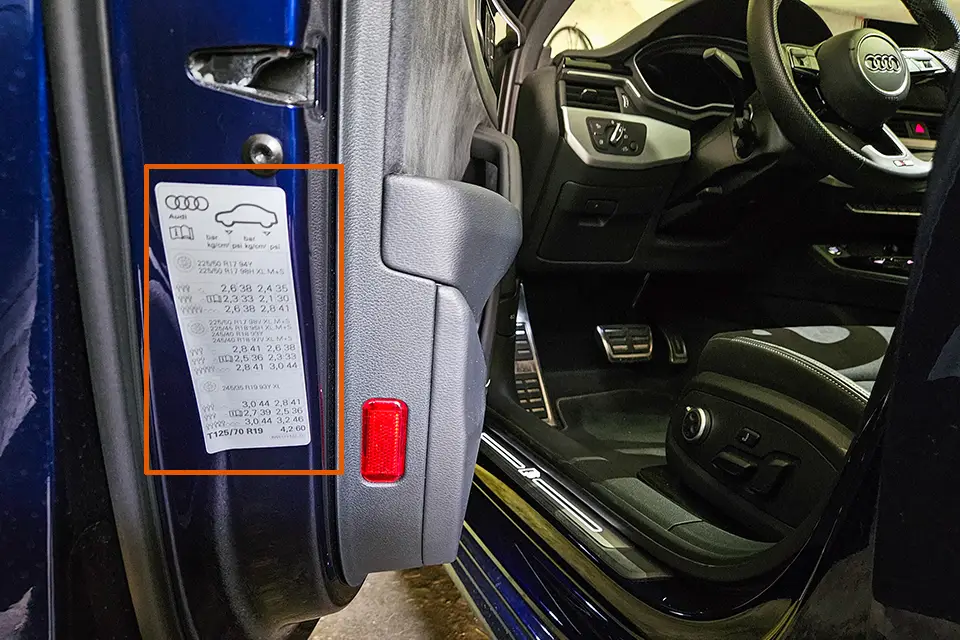
Step 2: Remove the Valve Cap
Once you've identified the correct tire pressure, it's time to begin the inflation process. Start by unscrewing the valve cap on the tire you want to inflate. We recommend putting the cap in your pocket to avoid misplacing it during the process.
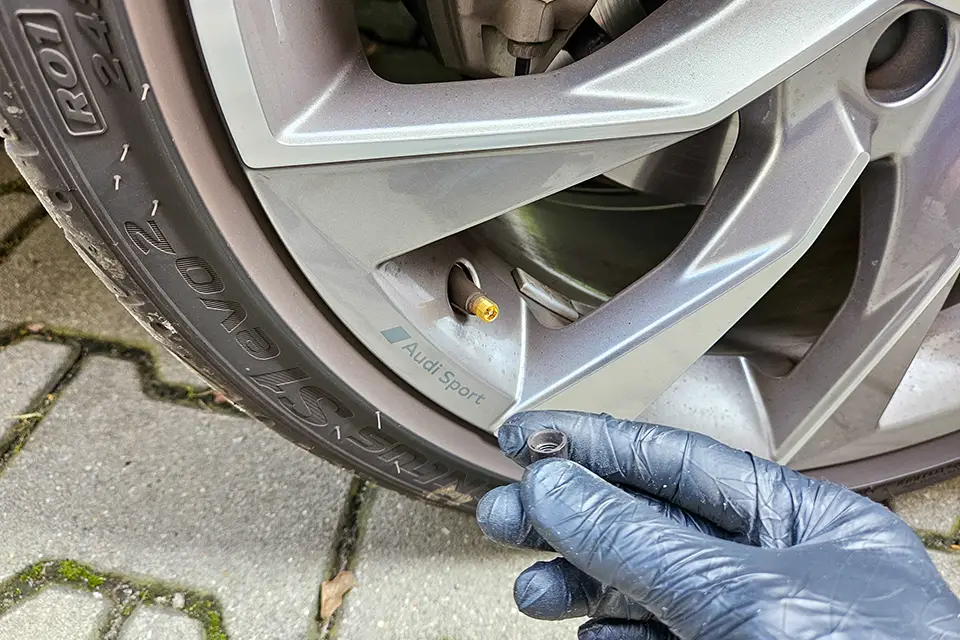
Step 3: Check the Air Pressure
Even if your tire appears visibly underinflated, it's wise to check the current air pressure before adding more. This step ensures that you're inflating the tire to the correct level and not overdoing it.
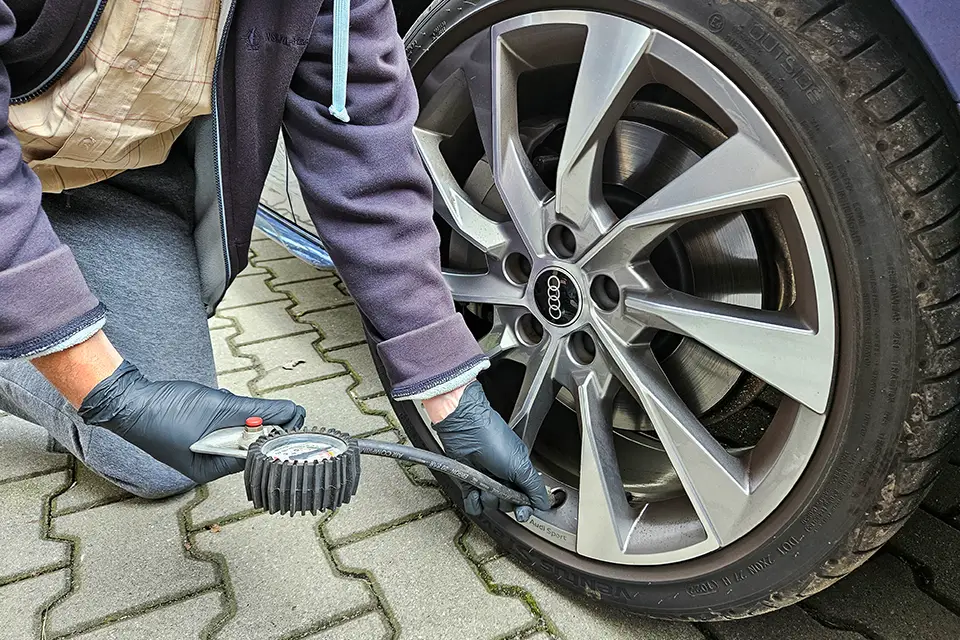
Step 4: Attach the Air Hose
Now, it's time to connect the air hose from the air compressor or air pump to the valve stem on the tire. Ensure a secure attachment to prevent any air from escaping. A properly attached hose should not produce a hissing sound. Use the correct air hose coupler. Not all air hose couplers are created equal. Some are designed for specific types of valve stems. Make sure you're using the correct one to avoid leaks.
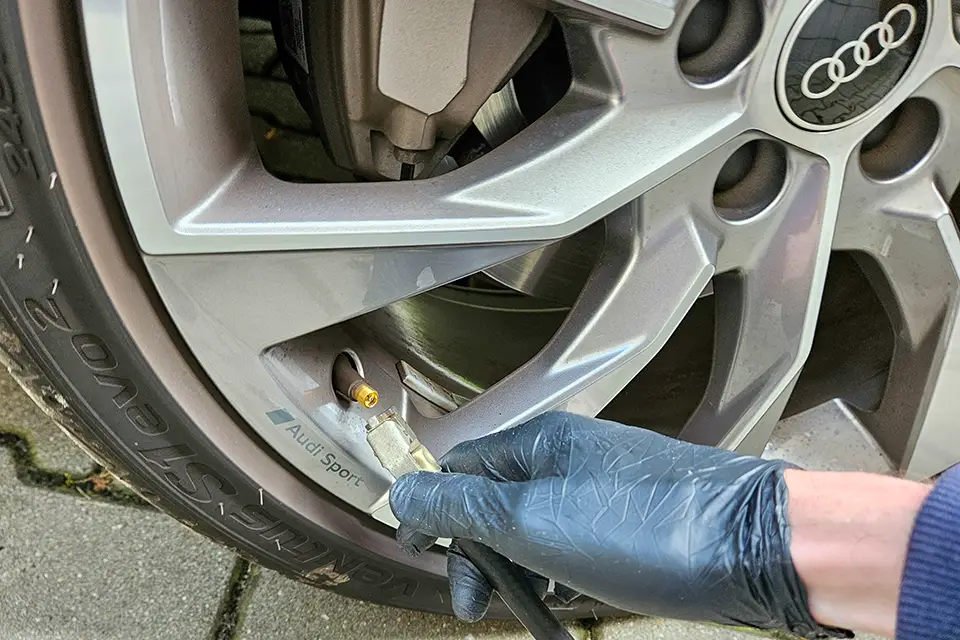
Step 5: Inflate the Tire
Turn on the air compressor or air pump and start inflating the tire. You can use a tire pressure gauge to monitor the pressure throughout the process, ensuring you reach the recommended tire pressure. Counting the seconds as you inflate can help you estimate the time required.
Step 6: Check the Pressure Again
Once you believe you've reached the recommended tire pressure, switch off the air compressor or pump and remove the air hose from the valve stem. Use a tire pressure gauge once more to double-check that the pressure matches the recommended level. It's important to note that tires can lose pressure over time, especially if you're driving in cold weather or over rough terrain. That's why it's a good idea to check your tire pressure regularly, and especially before any long road trips.
Step 7: Replace the Valve Cap
After successfully inflating the tire to the correct pressure, don't forget to replace the valve cap. This simple step helps prevent dirt and debris from entering the valve stem, potentially causing damage to the tire. Additionally, replacing the valve cap can help to improve the tire's fuel efficiency and extend its lifespan. It is a good practice to check the valve caps on your tires regularly and replace them if they are missing or damaged.
Step 8: Repeat for Other Tires
Lastly, repeat these steps for each tire on your vehicle. Remember to check the recommended tire pressure for each tire and inflate them accordingly. Maintaining uniform tire pressure across all tires is essential for a safe and smooth ride.
Step 9: Resetting Tire Pressure Monitoring System (TPMS)
If your vehicle is equipped with a TPMS, it's essential to reset it after adjusting tire pressure to keep it functioning correctly. Consult your vehicle's manual for specific instructions on how to reset the TPMS, as the process can vary between car models.
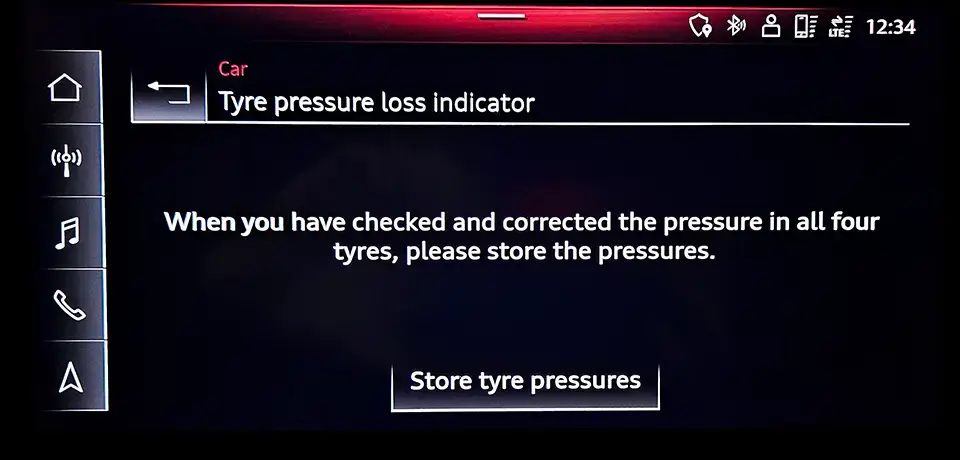
Search by State
- Alabama
- Alaska
- Arizona
- Arkansas
- California
- Colorado
- Connecticut
- Delaware
- District of Columbia
- Florida
- Georgia
- Hawaii
- Idaho
- Illinois
- Indiana
- Iowa
- Kansas
- Kentucky
- Louisiana
- Maine
- Maryland
- Massachusetts
- Michigan
- Minnesota
- Mississippi
- Missouri
- Montana
- Nebraska
- Nevada
- New Hampshire
- New Jersey
- New Mexico
- New York
- North Carolina
- North Dakota
- Ohio
- Oklahoma
- Oregon
- Pennsylvania
- Rhode Island
- South Carolina
- South Dakota
- Tennessee
- Texas
- Utah
- Vermont
- Virginia
- Washington
- West Virginia
- Wisconsin
- Wyoming